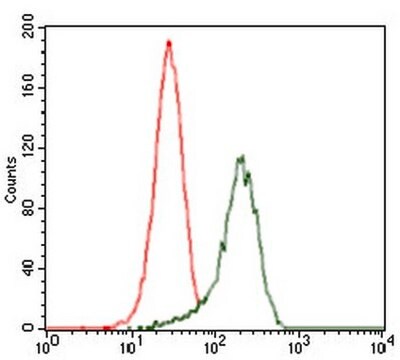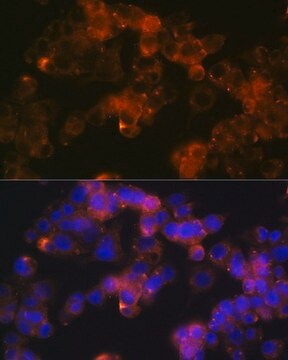S8321
Monoclonal Anti-Sonic Hedgehog (Shh) antibody produced in mouse
clone SH154, purified from hybridoma cell culture
Synonyme(s) :
Anti-Shh
About This Item
Produits recommandés
Source biologique
mouse
Niveau de qualité
Conjugué
unconjugated
Forme d'anticorps
purified immunoglobulin
Type de produit anticorps
primary antibodies
Clone
SH154, monoclonal
Forme
buffered aqueous solution
Espèces réactives
human, rat, mouse
Concentration
~2 mg/mL
Technique(s)
immunohistochemistry: 1:500 using formaldehyde-fixed human tissue sections
indirect ELISA: 2 μg/mL
western blot: 2 μg/mL using recombinant mouse SHH peptide
Isotype
IgG1
Numéro d'accès UniProt
Conditions d'expédition
dry ice
Température de stockage
−20°C
Modification post-traductionnelle de la cible
unmodified
Informations sur le gène
human ... SHH(6469)
mouse ... Shh(20423)
rat ... Shh(29499)
Description générale
Anti-Sonic Hedgehog antibody recognizes human, rat and mouse Shh.
Spécificité
Application
Actions biochimiques/physiologiques
Forme physique
Clause de non-responsabilité
Vous ne trouvez pas le bon produit ?
Essayez notre Outil de sélection de produits.
Produit(s) apparenté(s)
Code de la classe de stockage
10 - Combustible liquids
Classe de danger pour l'eau (WGK)
WGK 3
Point d'éclair (°F)
Not applicable
Point d'éclair (°C)
Not applicable
Équipement de protection individuelle
Eyeshields, Gloves, multi-purpose combination respirator cartridge (US)
Faites votre choix parmi les versions les plus récentes :
Déjà en possession de ce produit ?
Retrouvez la documentation relative aux produits que vous avez récemment achetés dans la Bibliothèque de documents.
Articles
Cancer stem cell media, spheroid plates and cancer stem cell markers to culture and characterize CSC populations.
Notre équipe de scientifiques dispose d'une expérience dans tous les secteurs de la recherche, notamment en sciences de la vie, science des matériaux, synthèse chimique, chromatographie, analyse et dans de nombreux autres domaines..
Contacter notre Service technique






